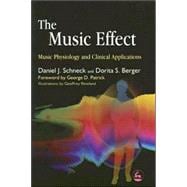
What is included with this book?
| Foreword by George D. Patrick, Mark O. Hatfield Clinical Research Center, Bethesda, MD | 11 | (2) | |||
| Prelude | 13 | (4) | |||
| Chapter 1: Introduction | 17 | (10) | |||
|
17 | (1) | |||
|
18 | (1) | |||
|
19 | (3) | |||
|
22 | (5) | |||
| Chapter 2: What Is This Thing Called "Music"? | 27 | (11) | |||
|
27 | (1) | |||
|
28 | (3) | |||
|
31 | (2) | |||
|
33 | (2) | |||
|
35 | (3) | |||
| Chapter 3: Principles of Physics and the Elements of Music | 38 | (23) | |||
|
38 | (1) | |||
|
39 | (2) | |||
|
41 | (4) | |||
|
45 | (3) | |||
|
48 | (5) | |||
|
53 | (4) | |||
|
57 | (2) | |||
|
59 | (2) | |||
| Chapter 4: Principles of Physiology and the Elements of Sensory Information-processing | 61 | (29) | |||
|
61 | (2) | |||
|
63 | (6) | |||
|
69 | (11) | |||
|
80 | (2) | |||
|
82 | (4) | |||
|
86 | (4) | |||
| Chapter 5: Fear and the Instinct for Survival: What Happens When the Set-points Go Awry? | 90 | (27) | |||
|
90 | (3) | |||
|
93 | (5) | |||
|
98 | (1) | |||
|
99 | (4) | |||
|
103 | (6) | |||
|
109 | (5) | |||
|
114 | (1) | |||
|
115 | (2) | |||
| Chapter 6: Physiological Entrainment | 117 | (21) | |||
|
117 | (2) | |||
|
119 | (3) | |||
|
122 | (5) | |||
|
127 | (2) | |||
|
129 | (4) | |||
|
133 | (3) | |||
|
136 | (2) | |||
| Chapter 7: Rhythm in Music and Physiology | 138 | (22) | |||
|
138 | (1) | |||
|
138 | (4) | |||
|
142 | (16) | |||
|
158 | (2) | |||
| Chapter 8: Melody: The Pitch of Human Emotion | 160 | (30) | |||
|
160 | (2) | |||
|
162 | (2) | |||
|
164 | (1) | |||
|
165 | (6) | |||
|
171 | (2) | |||
|
173 | (3) | |||
|
176 | (2) | |||
|
178 | (3) | |||
|
181 | (6) | |||
|
187 | (3) | |||
| Chapter 9: Timbre, Harmony, and Dynamics: Adding Richness and Depth to Rhythm and Melody | 190 | (31) | |||
|
190 | (2) | |||
|
192 | (8) | |||
|
200 | (4) | |||
|
204 | (3) | |||
|
207 | (2) | |||
|
209 | (5) | |||
|
214 | (2) | |||
|
216 | (5) | |||
| Chapter 10: Form: Creating Aesthetic Wholeness | 221 | (19) | |||
|
221 | (2) | |||
|
223 | (6) | |||
|
229 | (11) | |||
| Chapter 11: Nature Expressed Through Nurture | 240 | (10) | |||
|
240 | (1) | |||
|
241 | (3) | |||
|
244 | (3) | |||
|
247 | (3) | |||
| Chapter 12: Coda: Where Are They Now? | 250 | (8) | |||
| REFERENCES | 258 | (5) | |||
| SUBJECT INDEX | 263 | (9) | |||
| AUTHOR INDEX | 272 |
The New copy of this book will include any supplemental materials advertised. Please check the title of the book to determine if it should include any access cards, study guides, lab manuals, CDs, etc.
The Used, Rental and eBook copies of this book are not guaranteed to include any supplemental materials. Typically, only the book itself is included. This is true even if the title states it includes any access cards, study guides, lab manuals, CDs, etc.